Beyond the button: Exotic mushroom growing takes off in Australian sheds and suburbs
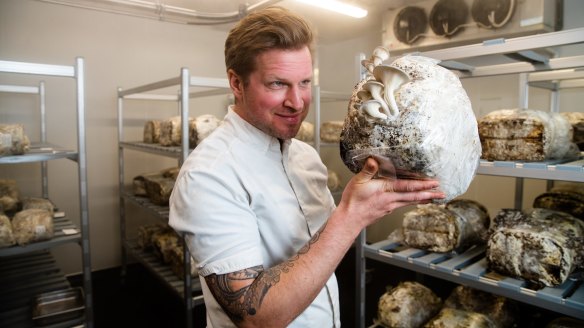
Out back of Ballarat in Central Victoria, on a hill scarred by gold mines, sits a brand new shed. Small, clean and clinical like a Bond villain lair, the shed is home to exotic fungi farm The Mushroom Connection.
Owner Jason Crosbie was a fungus enthusiast, working in IT, until last year when his vision to make a living off mushrooms became a reality. On his Ballarat hill, Crosbie grows a range of mushrooms such as blue oysters, king brown, shiitake, enoki, and lion's mane, harvesting about 80 kilograms per week for restaurants and food stores.
Five years ago, there were only a handful of exotic mushroom growers like Crosbie in Australia. It is now estimated there are about 70 nationwide. "During lockdown, it seems everyone learned how to grow mushrooms," he says.
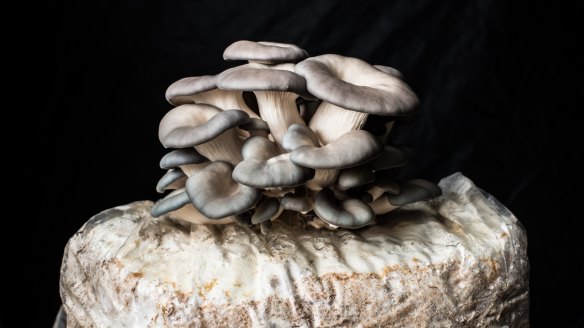
The exotic mushroom industry has a promising future. A keen supporter of its growth is Niall Blair, professor of food sustainability at Charles Sturt University and former NSW Minister for Primary Industries.
A board member of White Prince Mushrooms, and grower of everyday supermarket browns and whites, he is keen to work closely with producers of more left-field fungi.
"The scope for harvesting exotics such as lion's mane for its medicinal use is enormous," says Professor Blair, referring to the mushroom's reported benefits for brain function.
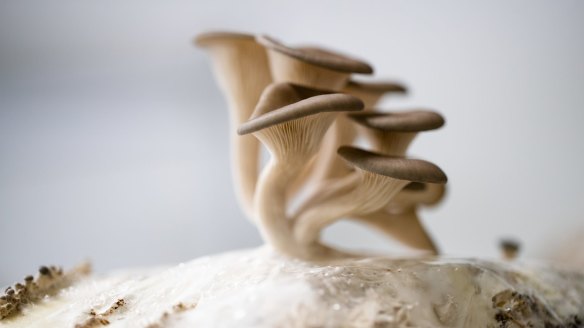
After working with farmers during the last drought, Professor Blair is keenly aware that mushroom farmers are in control of the growing climate instead of being controlled by it.
"Drought will continue to determine the availability of the substrate [a mushroom's growing medium], which is actually a byproduct of growing and processing grain, legumes, and fibre," he says. "But that is the beauty of mushrooms. It's a circular industry where waste products can be an income stream."
Harvest is continual too, not seasonal, so a farmer's income is spread across the year. Depending on the variety, exotic mushrooms can sell between $35 to $85 a kilogram at retail. "This is a market that is severely undersupplied," says Professor Blair. "Which explains the high prices and the number of farmers coming into the industry."
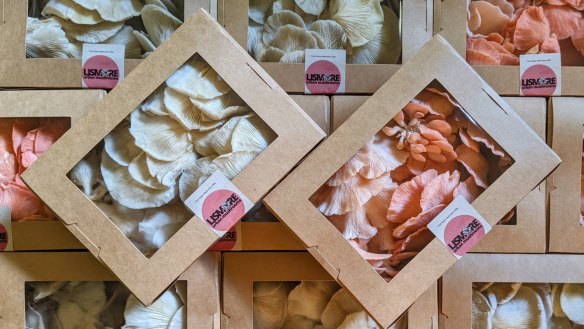
One such farmer is a woman known as Buttons, owner of The Mushroomery in Alphington, Melbourne. Buttons was a costume designer before starting to grow oyster mushrooms three years ago.
While many 'shroomers use disposable plastic bags to grow their fungi, Buttons prefers reusable plastic buckets with holes in the side for the mushrooms to sprout from. "It is such a labour intensive business," she says.
Buttons, like all mushroom growers, is constantly in fear of wild fungus spores that could ruin her crop. Last year, wild inky cap toadstools invaded the shipping container where she grows her colourful oysters. "That's why we heat sterilise the substrate," says Buttons. "That's why we have air filters. That's why I spend hours scrubbing buckets."
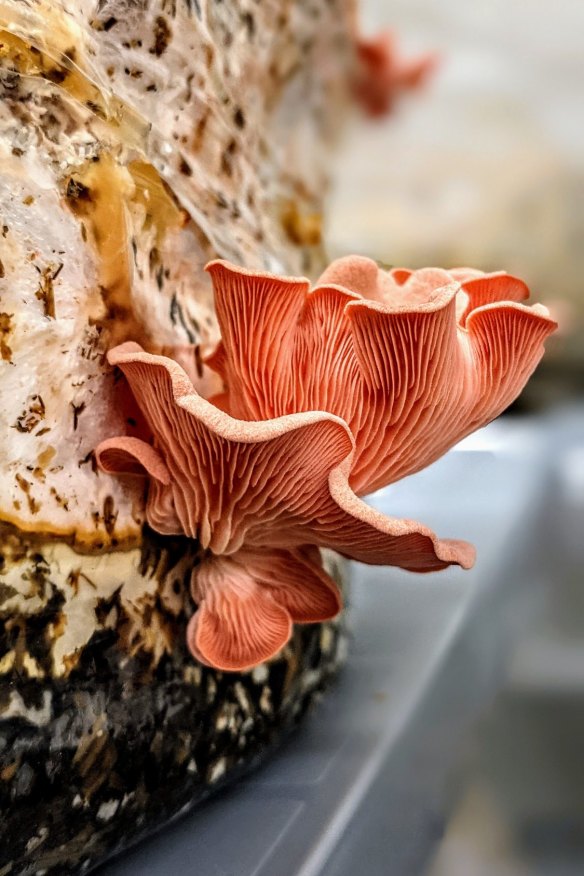
Joel Orchard from Young Farmers Connect is another small grower. His not-for-profit business mentors young people in sustainable agriculture in the Northern Rivers region of NSW. Orchard's own mushroom farm is housed in the garage of his rented property in Lismore.
"Exotic mushroom farming allows young people to enter farming without the extraordinary capital involved in buying land," says Orchard. "With $20,000 you can set up a farm, and within 12 months you can have an income equivalent to one wage."
Orchard sells to local retailers and restaurants including Three Blue Ducks in Byron Bay. He says that mushroom growers, like their product, tend to form clusters. In this case, the clusters are in and around the urban areas of Sydney, Melbourne, Brisbane and the Northern Rivers.
"With land so expensive, mushroom farms fit perfectly into urban agriculture, feed local communities, and therefore cut down on food miles."
For sustainable cafe Stix in Marrickville, Sydney, mushroom freight is a matter of metres rather than miles. Stix has been growing its own lion's mane, shiitake, and oyster mushrooms in unused cool rooms since 2018.
"We harvest the mushrooms three times a week," says Stix head of menu development Hendrik Janavicius. He also supplies hatted Sydney restaurants such as Nomad, Ester and Fred's.
The mushrooms grow in a mix of bran and sawdust gathered from a mill near the Stix's farm on the Hawkesbury, and are incubated in old cool rooms designed to replicate a temperate forest floor.
At the cafe, Janavicius sautes oyster mushrooms in a little olive oil but not much else. "We try to keep seasoning minimal so that the flavours of the mushroom are not masked," he says.
Exotic mushroom shopping 101
More and more supermarkets, grocers and food stores are stocking exotic mushrooms that are a world away in flavour from common Swiss browns and buttons. Here are five to put in your shopping basket this winter.
King Brown
Meaty and slightly chewy, king browns love to be sliced lengthways and fried in plenty of butter. Alternatively, slice finely and deep fry in tempura batter.
Lion's Mane
Shaggy, globe-shaped that resembles, well, a lion's mane. Cook gently in oil in a heavy pan, with a weight on top of the mushroom to make a crisp, golden dish with steak-like texture. Can also be fried with garlic and stirred through pasta.
Oyster
Available in varieties such as pink, yellow and blue, oysters can be grilled and served as a side dish or used in vegetarian burgers. They're also great in a mushroom stroganoff.
Shiitake
Shiitake are a good source of umami and fond of soy sauce. Add to ramen, or slice, saute and cool for soba noodle salad with sesame oil and ponzu dressing.
Enoki
Popular in Japanese cuisine, enoki can be bunched like a mushroom bouquet, fried in oil, dressed and served as the main event. Delicious folded through an omelet, too, or used raw in a salad dressed with shoyu, sesame oil and lemon.
- More:
- Restaurant news
